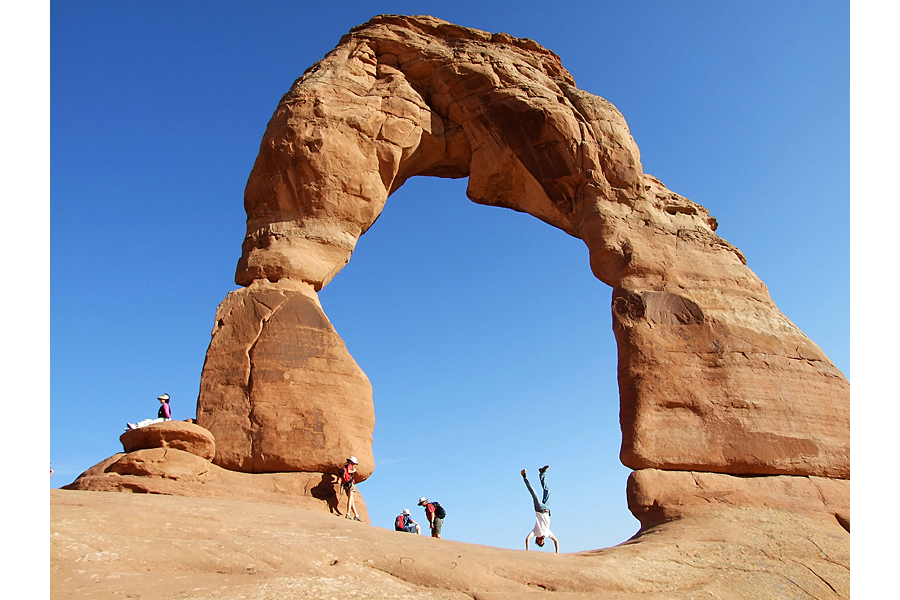What keeps nature's sandstone arches from falling? Oddly, it's gravity.
Loading...
Photos of graceful sandstone arches, villages set deep into natural alcoves in cliffs, or gravity-defying rocks perched atop pedestals are staples for summer-vacation uploads to Flikr or Instagram.
Wind may have freed these pillars and arches from their surrounding rock or carved out the alcoves. But gravity is the ultimate "glue" that ensures these spectacular landforms stand for hundreds to thousands of years, according to a new study.
For tourists visiting places such as Arches National Park in Utah, that's good news. For gravity, it's a major role reversal, notes a research team led by Jiri Bruthans, a geologist at Charles University in Prague.
Gravity long had been seen as a force that worked to tear down these landforms. But lab experiments and modeling studies the team conducted suggest that for these features quite the opposite is the case.
In effect, as erosion eats away at the surrounding rock, the rock that remains has to bear the weight of any overlying sandstone. This stress increases as erosion shrinks the rock formation until the compression is intense enough to lock the sandstone grains together. Wind has a much tougher time chipping away at this scrunched sandstone. Facing a vastly slower rate of erosion, what remains – arch, pillar, pedestal, or alcove – becomes a fixture on the landscape.
"A lot of textbooks need to have some adjustments made to them now," says Alan Mayo, a geologist at Brigham Young University of Salt Lake City and a member of the research team.
The team first uncovered clues to this mechanism at Strelec Quarry in northern Czechoslovakia, a source of sand for highly valued Bohemian glass.
Chunks of the sandstone removed from the quarry readily disintegrate even when rubbed between fingers, Dr. Mayo explains. But to mine it, the sandstone has to be blasted free – a testament to the interlocking nature of the grains when subject to the pressure of overlying rock formations.
Dr. Bruthans and colleagues took blocks of the Strelec sandstone to the lab, carefully – and not without some sandstone casualties – cut them into small blocks, and put them under pressure using lead weights or a special clamp.
When submerged in water, uncompressed samples quickly disintegrated. When the team applied various amounts of squeeze to the samples, they found that at some point disintegration stopped, leaving what remained in a stable, hour-glass shape.
A block subject to artificial rain formed a stable arch when enough material had eroded to raise the stress sufficiently to lock the grains. Other experiments with various other factors influencing erosion led to the formation of pedestals or the beginnings of an alcove.
The team then repeated the experiments conducted with so-called cemented sandstone taken from various locations in Czechoslovakia, the United States, and Venezuela. They found the same relationship between increased stress and increased resistance to erosion.
"It's a simple explanation, but it holds up to scientific rigor," Mayo says. "The question we haven't resolved yet is why you get arches in some cases versus alcoves or pedestal rocks."
The final shape of the landform may be determined by the orientation of fractures within the original sandstone formation, he suggests.
Still, the results point to "a lovely and elegant formative mechanisms for a lovely and elegant kind of landform," writes University of Minnesota geologist Chris Paola in a companion piece to the research results, which were published Sunday in the journal Nature Geoscience.








